Resources
About Us
Smart Appliances Market by Product Type (Kitchen, Laundry, HVAC, Entertainment, Security), Technology (Wi-Fi, Bluetooth, Zigbee, Matter), Distribution Channel (Online, Offline, Direct), End User (Residential, Commercial), and Geography - Global Forecast to 2032
Report ID: MRSE - 1041470 Pages: 360 Apr-2025 Formats*: PDF Category: Semiconductor and Electronics Delivery: 24 to 72 Hours Download Free Sample ReportThe global smart appliances market is experiencing robust growth, driven by increasing smart home penetration, technological advancements, and rising consumer demand for connected, intelligent home solutions. The market is segmented by product type, technology, distribution channel, end-user, and geography, with significant opportunities across residential and commercial applications.
This comprehensive market research report analyzes the dynamic smart appliances market, evaluating how connectivity and intelligent features are transforming traditional home appliances into systems that enhance efficiency, convenience, and user experience. The report provides strategic analysis of market dynamics, detailed segmentation, growth projections, and competitive positioning across global and regional markets.
The smart appliances market is primarily driven by the growing smart home ecosystem and IoT adoption, rising energy efficiency concerns and regulations, increasing disposable income and changing lifestyles, and technological advancements in AI and machine learning. Key trends include increased AI and machine learning integration, expansion in voice assistant compatibility, and a shift towards remote diagnostics and predictive maintenance.
Despite promising growth prospects, the smart appliances market faces challenges including high initial costs limiting mass adoption, privacy and security concerns, interoperability and standardization issues, technological obsolescence, high replacement costs, and supply chain vulnerabilities that affect production capabilities.
The smart appliances market offers several high-growth opportunities. Integration with renewable energy systems presents a significant opportunity as smart appliances can optimize energy usage and integrate with solar and other clean energy sources. Expansion in emerging markets, driven by urbanization and growing middle-class populations, represents another major growth avenue. The development of smart grid infrastructure enables better energy management, while innovative service-based business models are creating new revenue streams for manufacturers and service providers.
Smart Kitchen Appliances command the largest share of the overall smart appliances market in 2025, with smart refrigerators leading the share within this category. The large share of this market is mainly attributed to the early integration of connectivity features, significant consumer benefits in food management, and successful integration with shopping assistants and meal planning applications. On the other hand, Smart Home Safety and Security Appliances segments are projected to grow at the highest CAGR through 2032. This significant growth is primarily driven by increasing security concerns among homeowners, decreasing cost of components making these systems more affordable, and expanding integration capabilities with comprehensive home automation systems.
On the basis of technology, Wi-Fi Enabled devices dominate the overall smart appliances market in 2025, owing to widespread Wi-Fi infrastructure availability in both residential and commercial settings, better connection range compared to its alternatives, and unified compatibility with existing home networks and internet ecosystems. However, Matter Standard enabled devices are expected to grow at the highest CAGR through 2032. This emerging protocol is rapidly gaining market traction by solving long-standing interoperability issues in the smart home space, with strong support from leading tech firms and appliance manufacturers aiming to unify connectivity across their products.
Offline Retail maintains the largest market share of the overall smart appliances market in 2025, as consumers continue to prefer hands-on demonstrations and immediate expert guidance when making high-value smart appliance purchases. However, online retail channel is growing at the highest CAGR during the forecast period of 2025-2032, fueled by increasing adoption of e-commerce in many regions across the globe, increasingly sophisticated virtual product demonstrations, detailed comparison capabilities, competitive pricing structures, and the growing consumer comfort with purchasing high-value items online.
The Residential segment holds the largest share of the market, reflecting widespread consumer adoption of smart home technologies. The accessibility of consumer-oriented smart appliances across various price points has fueled residential adoption, particularly in urban and suburban markets of many countries/regions with high digital connectivity. On the other hand, within the commercial segment, the Hospitality subsegment is expected to grow at the highest CAGR through 2032, primarily driven by increasing adoption of smart appliances in hotels which are implementing smart systems to enhance guest experiences and reduce operational and maintenance costs through energy optimization.
North America currently holds the largest share of the global smart appliances market in 2025. The U.S. holds the largest share of the North American market mainly due to high consumer purchasing power, advanced smart home penetration, and strong early adoption tendencies for new technologies. Well-established retail networks and robust internet infrastructure further support the region's market leadership.
The Asia-Pacific region is projected to grow at the highest CAGR through 2032, particularly driven by China and India. This growth is propelled by several factors: rapid urbanization, expanding middle-class populations with increasing disposable income, growing internet penetration, and strong domestic manufacturing capabilities that are making smart appliances more accessible at various price points.
The global smart appliances market features established appliance manufacturers expanding their smart offerings alongside technology companies entering the space. Major players include Samsung Electronics Co., Ltd., LG Electronics Inc., Whirlpool Corporation, Haier Group Corporation (GE Appliances), and Electrolux AB, who compete based on smart features, ecosystem integration, and brand reputation.
BSH Hausgeräte GmbH (Bosch), Panasonic Corporation, and Midea Group Co., Ltd. hold strong positions, particularly in specific product categories and regional markets. Premium brands like Miele & Cie. KG focus on high-end smart appliance offerings, while technology-focused companies like Philips N.V. and Xiaomi Corporation leverage their connectivity expertise.
The market is characterized by increasing strategic partnerships between appliance manufacturers and technology companies to create integrated smart home solutions. As the market evolves, key companies are focusing on addressing affordability challenges, developing solutions for ecosystem interoperability, and implementing robust privacy safeguards to earn consumer trust.
|
Particulars |
Details |
|
Number of Pages |
360 |
|
Format |
|
|
Forecast Period |
2025–2032 |
|
Base Year |
2024 |
|
CAGR (Value) |
11.5% (2025–2032) |
|
Market Size (Value) |
$93.03 Billion by 2032 |
|
Segments |
By Product Type
By Technology
By Distribution Channel
By End User
|
|
Key Companies Profiled |
Samsung Electronics Co., Ltd. (South Korea), LG Electronics Inc. (South Korea), Whirlpool Corporation (U.S.), Haier Group Corporation (China), Electrolux AB (Sweden), BSH Hausgeräte GmbH (Germany), Miele & Cie. KG (Germany), Panasonic Corporation (Japan), Midea Group Co., Ltd. (China), Hitachi, Ltd. (Japan), Philips (Netherlands), Xiaomi Corporation (China), Sharp Corporation (Japan), and Arçelik A.Ş. (Beko) (Turkey). |
The global smart appliances market is valued at $43.55 billion in 2025.
The smart appliances market is expected to reach $93.03 billion by 2032 from an estimated $43.55 billion in 2025, at a CAGR of 11.5% during the forecast period of 2025 to 2032.
By region, North America is expected to hold the largest share of the global smart appliances market in 2025. This dominance is driven by high disposable incomes, advanced digital infrastructure, and strong consumer appetite for connected home technologies.
The key players operating in the global smart appliances market are Samsung Electronics Co., Ltd. (South Korea), LG Electronics Inc. (South Korea), Whirlpool Corporation (U.S.), Haier Group Corporation (China), Electrolux AB (Sweden), BSH Hausgeräte GmbH (Germany), Miele & Cie. KG (Germany), Panasonic Corporation (Japan), Midea Group Co., Ltd. (China), Hitachi, Ltd. (Japan), Philips (Netherlands), Xiaomi Corporation (China), Sharp Corporation (Japan), and Arçelik A.?. (Beko) (Turkey).
By type, the smart refrigerators segment is forecasted to hold the largest market share; by technology, the Wi-Fi technology segment is expected to account for the largest market share; and by end-user, the residential segment is expected to account for the largest market share during the forecast period.
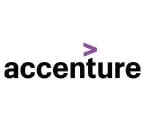

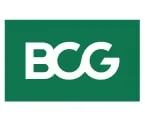
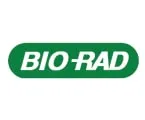
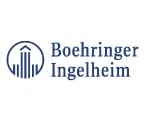


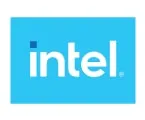
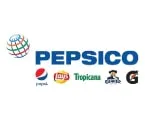
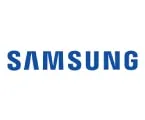


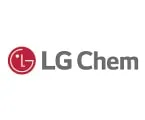



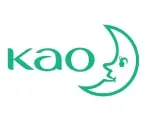
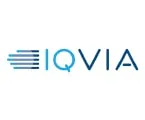



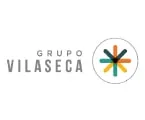


Published Date: Aug-2024
Published Date: Mar-2025
Published Date: Jan-2024
Published Date: Jun-2024
Published Date: Jan-2025
Please enter your corporate email id here to view sample report.
Subscribe to get the latest industry updates